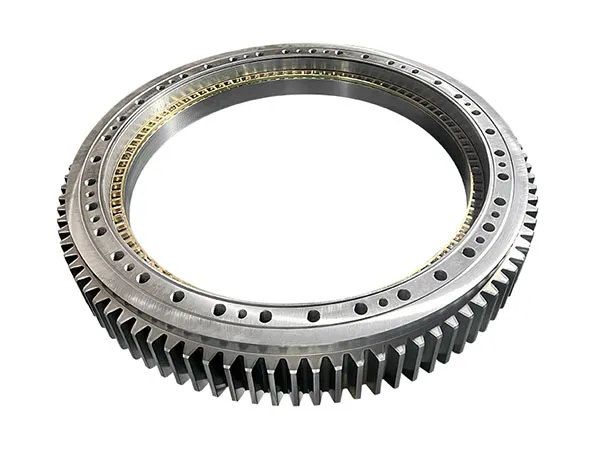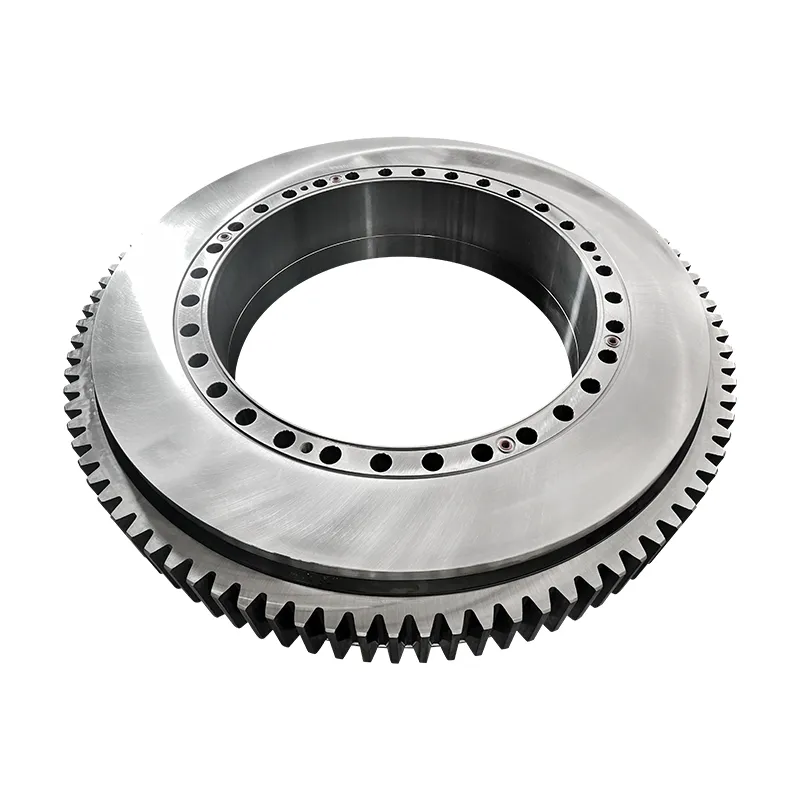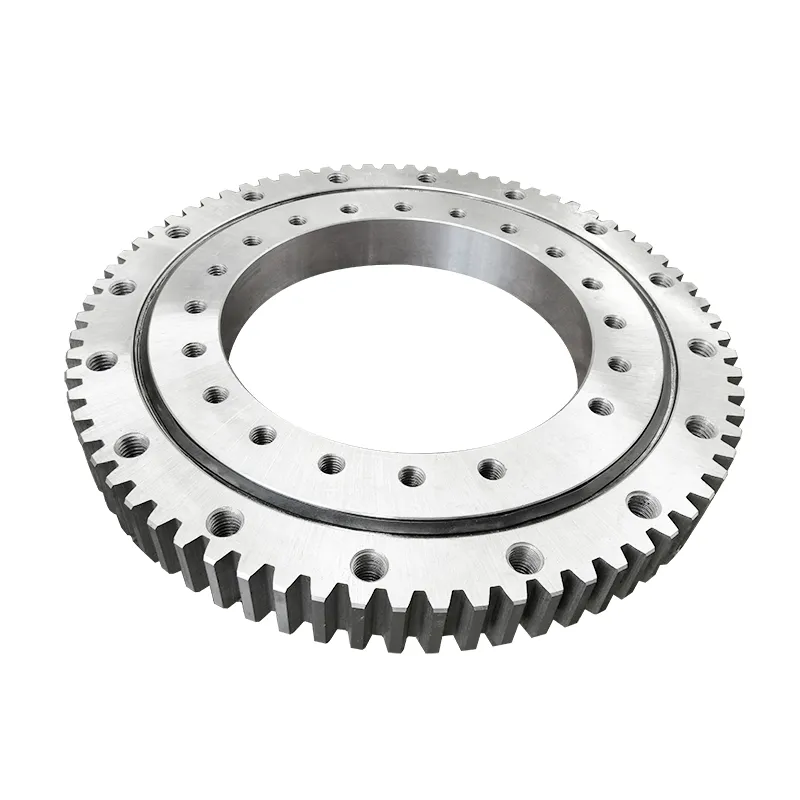- +86 13837949030 +86 15890619536
- info@lymcbearings.com export@lymcbearings.com
- Luoxin Industrial Cluster, Luoyang City,Henan Province,China
Time:2025-05-06 02:39:14 Source:LYMC Slewing Bearing
Repairing a slewing bearing is a complex task that should ideally be performed by experienced professionals or the original manufacturer. However, understanding the general processes involved can be helpful.Repairing slewing bearings involves a careful and methodical process to restore their performance and extend their service life. Here's a step-by-step guide on how to repair slewing bearings.

Visual Inspection: The bearing is thoroughly examined for visible damage such as cracks, dents, corrosion, and seal damage.
Performance Check: Turning torque, noise levels, and any signs of stiffness or uneven rotation are assessed.
Clearance Measurement: The internal clearance of the bearing is measured to determine the extent of wear. A dial indicator is often used to measure tilting or rocking of the connected structures.
Lubricant Analysis: If possible, samples of the existing grease are taken and analyzed for the presence of metal particles or other contaminants, which can indicate internal wear.
The slewing bearing is carefully disassembled. This process needs to be done methodically, keeping track of the orientation and position of all components.
All parts (raceways, rolling elements, spacers/cages, seals) are cleaned with appropriate solvents to remove old grease, contaminants, and debris.
The raceways are typically inspected using methods like magnetic particle inspection or visual testing under magnification to detect surface cracks or defects that may not be visible to the naked eye.
Hardness testing may be performed on the raceways to check for any loss of material hardness.
Based on the inspection and NDT results, a qualified engineer determines if the bearing can be repaired. Factors considered include the severity and location of the damage, the overall wear, and the cost-effectiveness of repair versus replacement.
If the damage is extensive (e.g., significant cracking, severe wear on raceways), replacement is usually the recommended course of action.

Minor Damage (Cracks, Small Dents): Welding and subsequent machining to restore the original dimensions might be possible. This requires specialized expertise and equipment to ensure proper material properties and dimensional accuracy.
Surface Treatments: Techniques like hard chrome plating, nitriding, or thermal spraying can be used to improve the wear or corrosion resistance of the raceways.
Raceway Grinding: If the raceways have uneven wear or minor surface damage, precision grinding can restore the correct geometry and optimize load-carrying capacity. This process often involves removing a small amount of material.
Replacement of Components: Worn or damaged rolling elements (balls or rollers) and seals are typically replaced with new, appropriately sized components.
Separators or cages are also inspected and replaced if necessary.
The repaired or reconditioned bearing is carefully reassembled with the new or refurbished components. Proper alignment is crucial during reassembly.
New, high-quality grease appropriate for the bearing type and application is applied to the raceways and rolling elements. The bearing is often rotated slowly during greasing to ensure even distribution.
After reassembly, the bearing is inspected again for smooth rotation, proper clearance, and correct sealing.
Performance tests, including load tests if applicable, may be conducted to ensure the bearing functions correctly under the expected operating conditions.
Important Considerations:
Expertise is Key: Slewing bearing repair requires specialized knowledge, tools, and techniques. It is generally not a task for untrained individuals.
Manufacturer Recommendations: Always refer to the original manufacturer's recommendations for maintenance, inspection, and repair procedures.

Quality of Repair: A poorly executed repair can lead to premature failure and potentially dangerous situations.
Cost vs. Replacement: Depending on the extent of the damage, the cost of repair might be comparable to or even exceed the cost of a new bearing. The downtime associated with repair should also be considered.
Preventive Maintenance: Regular lubrication, proper bolt tightening, and avoiding overloading are crucial to extending the life of a slewing bearing and minimizing the need for extensive repairs.
In summary, repairing a slewing bearing involves a detailed process of inspection, disassembly, specialized repair techniques based on the damage, careful reassembly, and thorough testing. Due to the complexity and safety implications, it's best left to qualified professionals.